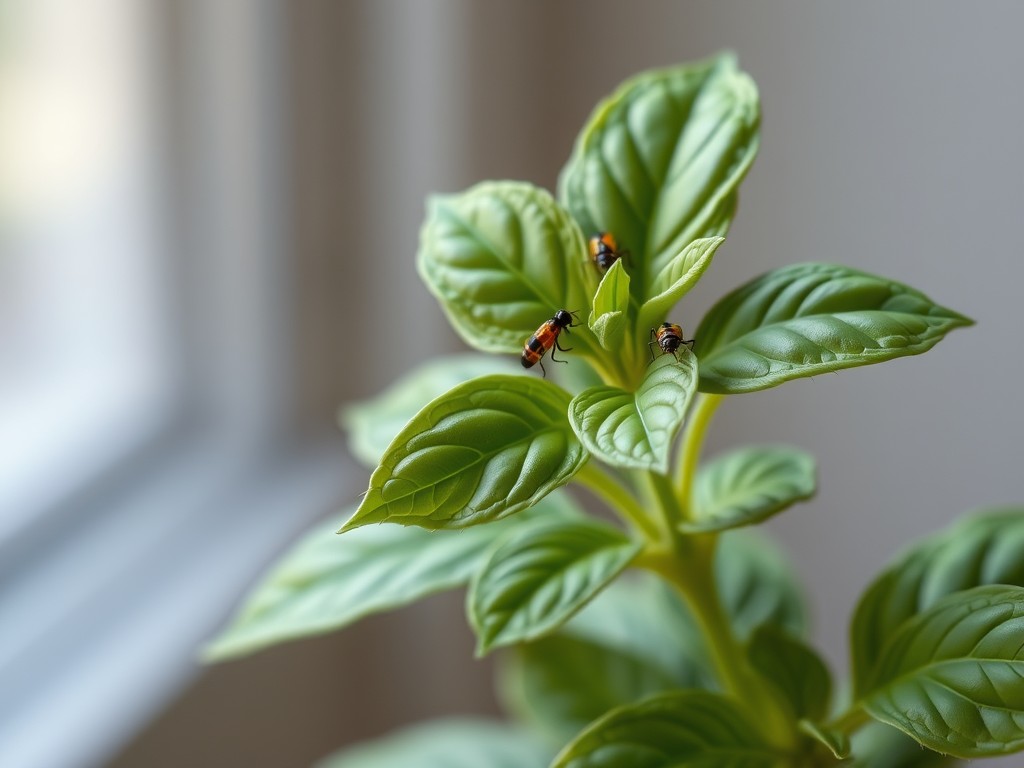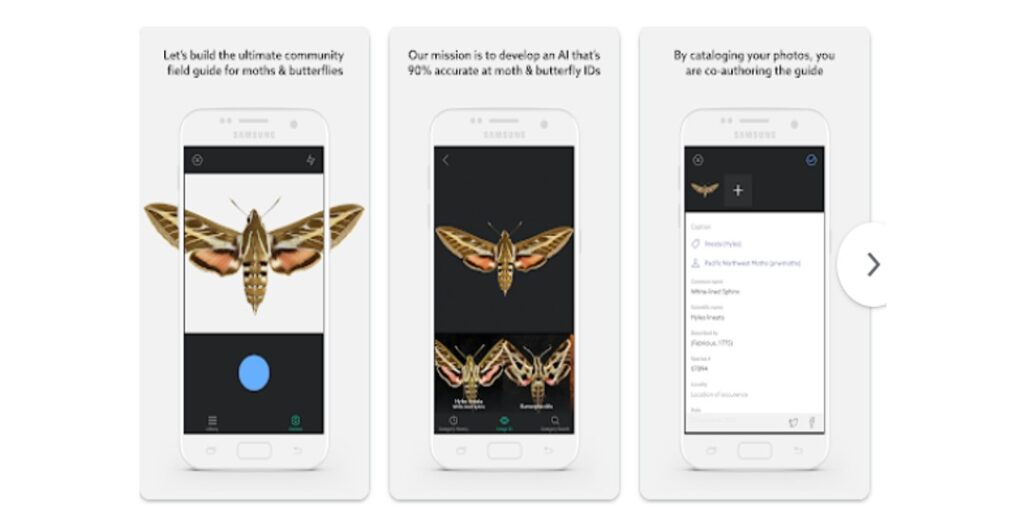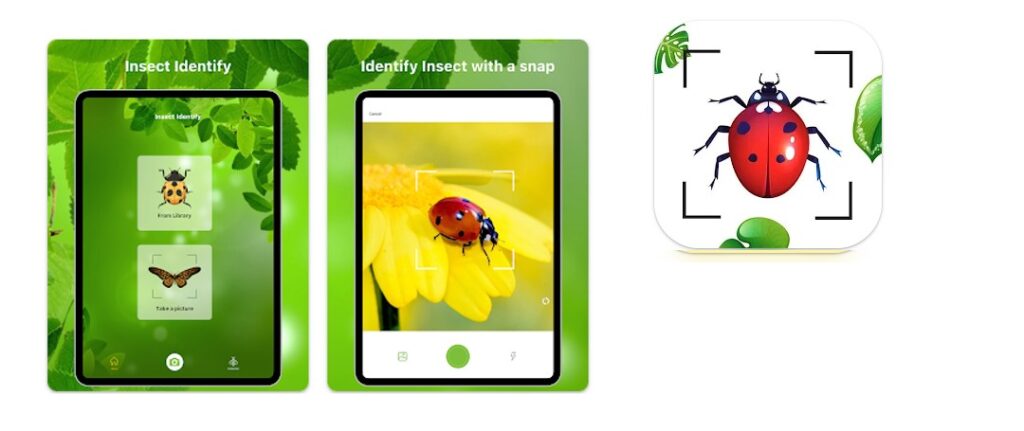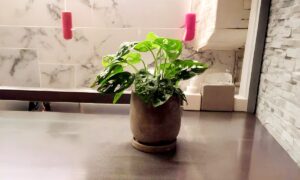
Indoor herb gardens can sometimes attract bugs, but the bugs are usually brought in by new plants that are occasionally added to the collection. Pests such as aphids, spider mites, and whiteflies can take residence on indoor herbs.
Pests are less picky when they have fewer options indoors. When herbs are outdoors, the essential oils and strong flavors typically keep bugs to a minimum. However, when growing herbs indoors, it is important to be aware of potential pests and take steps to remove them.
In this comprehensive guide, we’ll equip you with the knowledge and expertise to conquer these pesky invaders and ensure your indoor herb garden thrives pest-free.
In this article
Common Indoor Herb Garden Pests
Indoor herb gardens can fall victim to a variety of pests. These little troublemakers include aphids, mealybugs, spider mites, and whiteflies, among others. Each of these pests can inflict damage on your beloved herbs, so it’s essential to know your adversaries to effectively combat them.
Why Potted Plants Attract Bugs
Now that we’ve identified the common culprits, let’s explore why potted plants, including your indoor herb garden, can be irresistible to bugs. There are several reasons behind this attraction:
- Humid conditions in the potted plants: Bugs thrive in humid environments, and potted plants provide just the right amount of moisture for them to flourish.
- Poor potting soil: Subpar soil quality can attract pests, as it may lack the essential nutrients needed to keep your herbs healthy and pest-resistant.
- Transplants brought from a nursery: Transplants often come with unwanted hitchhikers – pests that can quickly infest your garden.
- Lack of predators in the potted plants: Indoor gardens typically lack the natural predators that would keep pests in check in an outdoor setting. This makes it easier for bugs to establish themselves.
Should You Be Worried about Bugs on Potted Plants?
Yes, you should be worried if you find bugs on your potted plants. While not all pests pose a significant threat, many can harm your herbs and hinder their growth. Moreover, some pests may carry diseases that can quickly spread among your plants.
Prevention and Maintenance Tips
Prevention is often the best defense when it comes to managing pests in your indoor herb garden. Here are some tips to help you maintain a bug-free sanctuary for your herbs:
- Be careful when buying transplants: When purchasing new herbs or plants, inspect them closely for any signs of pests. Don’t be afraid to ask the nursery or store staff for advice on pest prevention.
- Avoid humid conditions in the potted plants: To deter bugs that thrive in humidity, ensure proper ventilation and avoid overwatering your herbs. Proper drainage and air circulation can work wonders.
- Keep the potted plants clean: Regularly remove dead leaves and debris from your herb garden. Pests often hide in decaying matter, so keeping things tidy is a simple yet effective way to reduce their presence.
- Monitor your potted plants every day: Frequent inspections can help you catch and address pest issues early. Look for signs of infestations like discolored leaves, webbing, or tiny insects.
- Use good potting soil for the plants: Invest in high-quality potting soil that provides your herbs with the nutrients they need. Healthy plants are less susceptible to pests.
- Quarantine the infested potted plant: If you discover a plant with pests, isolate it from your other herbs immediately. This prevents the infestation from spreading.
- Grow potted plants that deter pests: Certain herbs and flowers can act as natural repellents for pests. Consider adding plants like marigolds, lavender, or chives to your indoor garden to help keep bugs at bay.
How to Get Rid of Bugs in My Potted Plants
Despite your best efforts, pests may still find their way into your indoor herb garden. When that happens, it’s essential to have effective methods for eliminating them.
Here are some mobile apps that will help you identify bugs:

Bug Identifier: This app is the leading insect identification app with the largest database available. It was developed with the help of expert entomologists. Simply take a photo of an insect to get descriptions, interesting stories, photos, and commonly asked questions. Download from Play Store

Leps by Fieldguide: This app focuses on identifying butterflies and moths. It provides loads of information on different species and allows you to share pictures and stories with other enthusiasts. Download from Play store.

Insect Identification Bug ID: Bug identification insect finder is an application that will help you identify bugs immediately or help you know what bug is with just one simple operation. Download from Play store.
Next, you are going to need to do this:
- Separate the plant from the rest of the plants: Isolation is key to prevent the infestation from spreading to other herbs in your garden. Place the affected plant in a separate area or room if possible.
- Find out how extensive the problem is: Assess the severity of the infestation. If it’s a minor issue, you may be able to handle it with natural remedies. For larger infestations, you might need to consider more aggressive measures.
- Use an organic solution to get rid of the bug: Use organic and chemical-free solutions to protect both your herbs and the environment. We’ll explore various natural remedies and techniques for pest control in the upcoming sections of this guide.
How Do You Keep Bugs Off Basil?
Here are some specific tips and strategies to protect your basil plants from pests:
- Inspect basil leaves regularly for any signs of infestation like small insects, webbing, or yellowing/wilting foliage. Catching problems early makes treatment easier.
- Grow basil in well-draining potting soil with a pH level around 6 to 7. Healthy soil provides nutrients to keep plants strong and less vulnerable.
- Use row covers or insect netting over basil seedlings and transplants when first bringing them inside. This forms a physical barrier to prevent pests from landing.
- Dust plants with diatomaceous earth. This non-toxic powder dehydrates soft-bodied insects that walk through it. Reapply after rain or watering.
- Grow basil in a sunny, well-ventilated area away from other herbs or houseplants that commonly attract pests like aphids or spider mites. Isolation limits cross-contamination.
- Encourage predatory insects by growing basil alongside pest-repellent plants like dill, coriander or marigolds. These natural allies help control infestations.
- Consider growing basil hydroponically if space allows. Soilborne pests cannot thrive as easily in soilless systems, lowering pest pressure.
I hope these additional tips help provide a comprehensive overview of protecting your indoor herb garden, and basil plants specifically, from unwanted bugs and pests. Let me know if any other questions come up!







